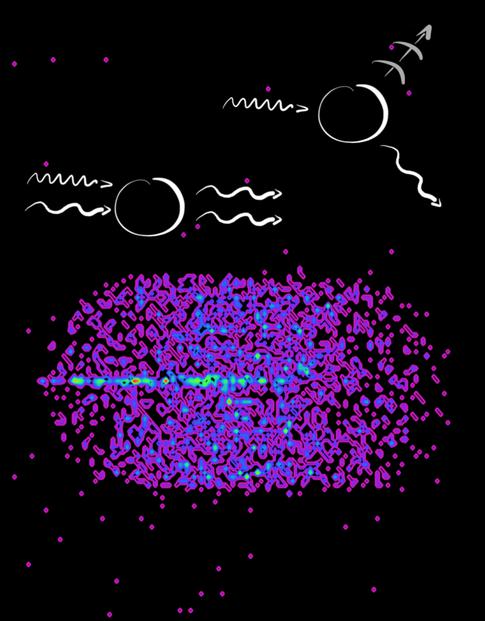XFEL: A new approach to look inside molecules
A new approach to look inside molecules
What happens when an intense X-ray beam crosses paths with a supersonic jet of atoms? A German-Swedish research team with lead authors from Max Born Institute, Germany, Uppsala University, Sweden, and European XFEL investigated this using a new method. They found that they could identify single atoms that underwent a rare process, known as stimulated Raman scattering. This work was carried out at European XFEL’s Small Quantum Systems (SQS) instrument and the results have been published in Science. The results pave the way towards controlling the motion of electrons in an atom or a molecule. These have the potential to be used for the efficient manipulation of atoms and molecules to gain deeper understanding of fundamental physics and for practical applications, for instance in batteries and solar cells.

“Typically, the much stronger linear processes occlude the interesting nonlinear processes,” says Uli Eichmann, lead author, from Max Born Institute for Nonlinear Optics and Short Pulse Spectroscopy. But although non-linear processes are difficult to identify, the new method, called Photon-Recoil Imaging, is able to clearly identify the distinctive signature left by the non-linear stimulated Raman scattering process.
“This method will open up unique possibilities when combined in the future with two independently controllable X-ray pulses of different wavelengths. Such pulse patterns have recently become available at X-ray lasers like the European XFEL,” says Michael Meyer, leading scientist at the SQS instrument and co-author of the paper. Because X-ray pulses with different wavelengths allow researchers to specifically address particular atoms in a molecule, it is possible to observe in detail how electrons move in molecules over time. In the long run, the researchers hope not only to observe this movement but also to influence it via tailored laser pulses. “Our approach will enable a better understanding of chemical reactions on the atomic scale and may help to steer the reactions in a desired direction. As the movement of electrons is the essential step in chemical and photochemical reactions occurring, for example, in batteries and solar cells, our approach may give new insight into such processes as well,” says Jan-Erik Rubensson, professor at Uppsala University, who is also a co-author.
Further information
- The scientific paper in the journal Science: Photon-recoil imaging: Expanding the view of nonlinear x-ray physics, DOI: 10.1126/science.abc2622
- Press release from the Max Born Institute
